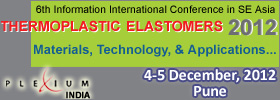
ARTICLES
US ethane supplies are forecasted to double by 2016, compared with the levels seen before the shale boom. This increased production has been the primary driver for renewed profitability and growth in the North American petrochemical industry. Measures by Government will boost shale gas development in China to 6.5 billion cubic mts by 2015, while countries in the EU have barely broken ground on shale gas. The US market could see a 45% increase in ethylene supply by 2025, giving US petrochemical producers a significant competitive advantage. Rising US ethane production is fuelling expectations that Middle Eastern producers might soon be fighting to preserve their hold on the European market. Products will be exported to Europe at a more competitive price. Read more in
Rising shale gas driven ethane production in US to usurp Middle East’s premier supplier status in Europe?
China’s exploitable shale gas reserves are estimated at 25.08 trillion cubic metres. Its' 5 year shale gas development plan for 2011-2015 targets production to rise from zero to 6.5 billion cubic meters (bcm) annually by 2015. Despite the country’s extensive plans to support and encourage industry growth, many believe that plans for shale gas production may be overly optimistic. The country will face severe challenges considering the geological complexities of China’s shale formations, skilled workforce, environment, etc. However, if China’s plans are successfully implemented, shale gas will change the pattern China’s energy consumption. Read more in Measures by Government to boost shale gas development in China to 6.5 billion cubic mts by 2015
The global polyethylene industry experienced strong growth over the last five years and is expected to continue advancing over the next five years. Strategies such as new product innovation, processes, and feedstock technologies are expected to help players capture market share. A combination of factors such as feedstock price, feedstock availability, lightweight properties, energy costs, environmental issues and government regulations are affecting the industry dynamics significantly. Read more in Global polyethylene industry to continue advancing to US$148 bln in 2017 at a CAGR of 3.5%
Driven by CO2 emission legislation, environment regulations and growing consumer awareness worldwide, the global automotive industry continues to strive towards greater fuel efficiency. The drive for greater fuel efficiency leads to light weighting that augurs well for the polymer industry. To know about the various polymers used in automotive, their applications in underhood, interior and exterior parts, their growth potential, etc, read Light weight and high performance materials, bioplastics drive developments in automotive industry
Waterproof membranes have enabled dramatic changes in infrastructure and civil engineering. Water reservoirs, dams, landfill and road tunnels are key applications of geosynthetics. With the green building initiatives worldwide, construction companies are looking to suppliers to improve their carbon footprint. Waterproof membrane producers have risen to this challenge. For a review of the markets along with the latest technology review, read Green opportunities for waterproof membranes
Solar power is gradually becoming cost-competitive with conventional energy sources, but to achieve this still requires significant further reductions in the costs of materials, manufacturing, and installation. Organic solar cells hold the promise of addressing these issues due to their potential to be manufactured on large areas at high speeds on lightweight substrates like plastic, but still require further increases in efficiency and operational lifetime to be truly cost-competitive with traditional energy sources. A new world record for OPV cell efficiency has been set by a German company. Read more in New world record efficiency of 10.7% for organic tandem cell
Fast, high-volume production of plastics with specially engineered surfaces will soon be available using a cheaper and simpler method. Pilot large scale manufacturing of nanoimprinted materials with better performance and at potentially lower cost than current production methods will be developed, prototyped and conducted. This technology can be more cost effective than conventional batch production. Read more in Anti-reflective, self-cleaning nanoimprinted plastic films


















